Casalguidi embroidery is a technique that’s associated with the district of Serravalle Pistoise near the city of Pistoia in northern Tuscany. It takes its name from the town of Casalguidi in this area.
The history and provenance of this technique is not clearcut. There are a few ecclesiastical pieces with elements of this style of embroidery that date back to the 12th century. They were worked on tessuti poveri which means coarser fabrics. It’s thought that because this technique didn’t use fine fabrics it wasn’t used in the furnishings and household linens of the nobility.
Then there’s a gap until the late 19th and early 20th centuries when the technique re-emerges. Like a lot of other traditional embroidery techniques from various regions of Italy there was a revival of embroidery at this time in this area of Tuscany.
Just who re-invented the technique is a matter of some dispute. Most researchers conclude that it was Carolina Amari but the evidence is circumstantial. What is certain is that the Morelli sisters founded a school in Casalguidi not long after the turn of the last century and taught the technique to local women. Jeanine Robertson gives a detailed history of the technique here in her blog Italian Needlework.
Characteristics of the Casalguidi technique Today Casalguidi is generally worked on linen but there are also some wonderful examples worked on silk. If you mention Casalguidi embroidery what springs immediately to mind is the dimensional quality of the famous motifs such as the bastone or stick. These are done in casalguidi stitch which is a padded version of raised stem stitch. You can see it here in the tree trunk and the dragon on a teaching sample stitched by Pat Bootland for our Guild:
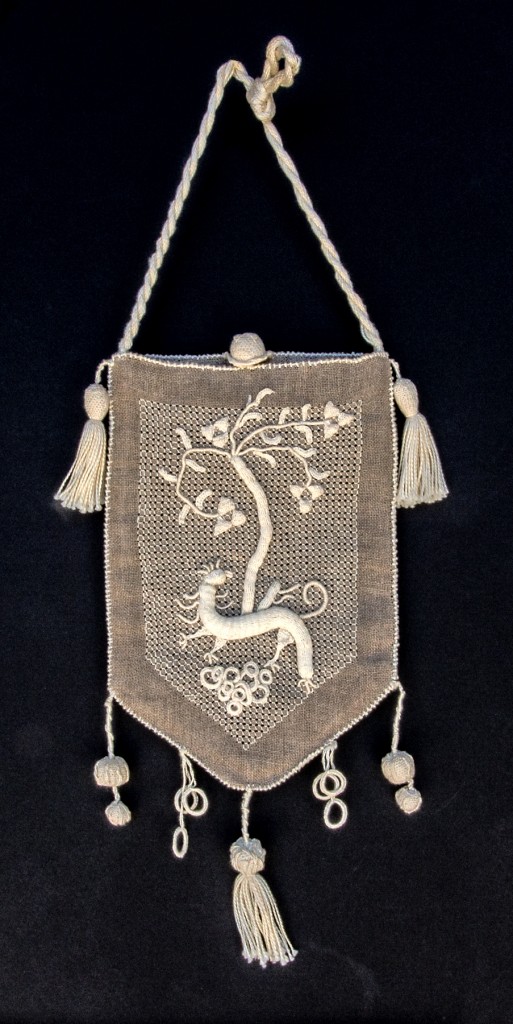
On Pat’s design you can also see that the main pattern is worked on a background of pulled thread work done in four-sided stitch. This is also very characteristic of Casalguidi – this technique opens up the background and gives depth to the main motifs.
Other characteristic stitches are curl stitch, buttonhole bars, needlelace and needleweaving. The motifs commonly used in Casalguidi embroidery are thought to come from nature or the decorative elements in local churches. A rather lovely motif is the six petalled rosette in needlelace. Pat has used the three petalled bud in her design above.
Casalguidi Lion
We have a stunning example of the Casalguidi embroidery in the Guild’s heritage Collection:
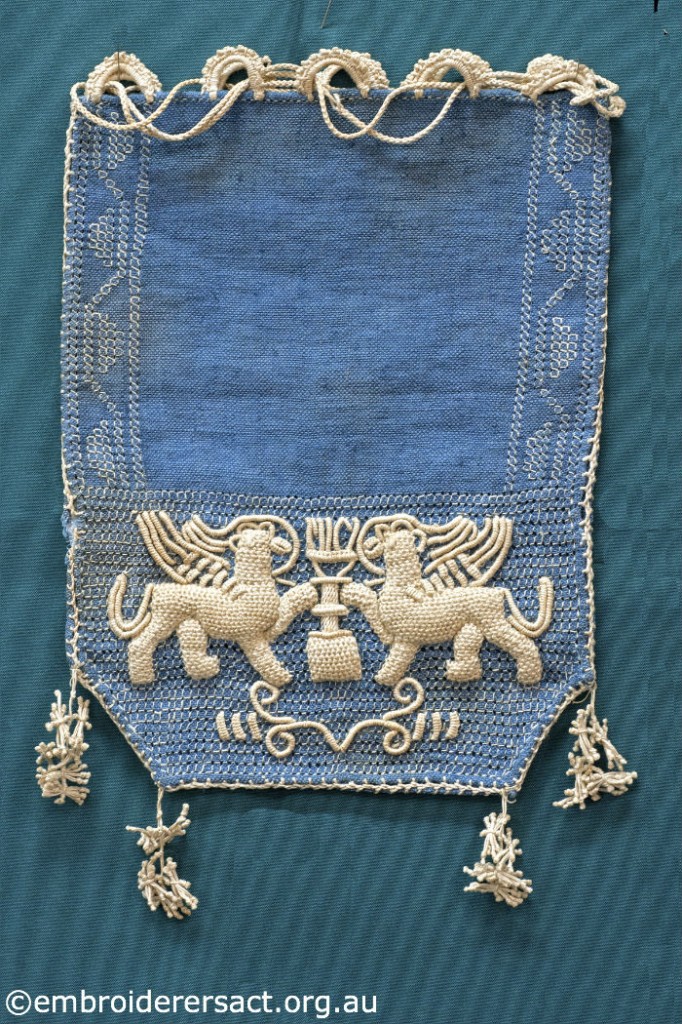
It was donated by an ex-President of the Guild the late Loma Ruddock and the notes on provenance state that the work was made in the town of Casalguidi in 1980. It features another famous motif – the Casalguidi lion. I was intrigued by this motif as it’s so reminiscent of the lion of St Mark the symbol of Venice:

so I googled in Italian for information about the history of Pistoia and the Lion of St Mark…….and up popped an Italian history site which explains that Pistoia was once divided into four districts one of which was Borgo San Marco. The heraldic symbol for this district was the Lion of St Mark.
A closer look at this beautiful piece of Casalguidi Are you ready for some eye candy? Here are some close-ups of the piece in our Collection:

and closer still for a look at the needlework for the lions:
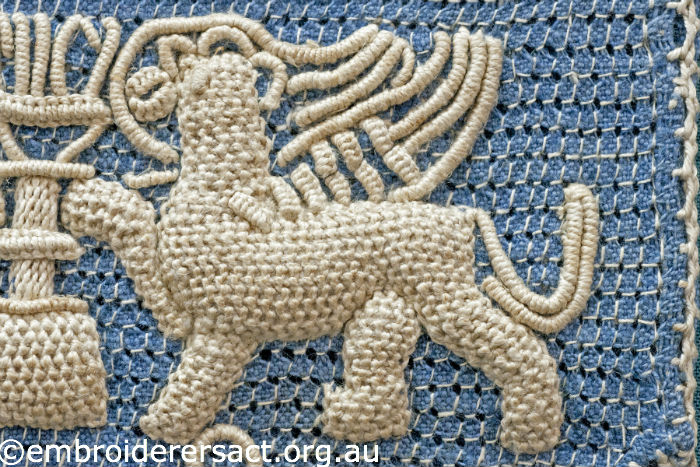
…..the four sided stitch background:
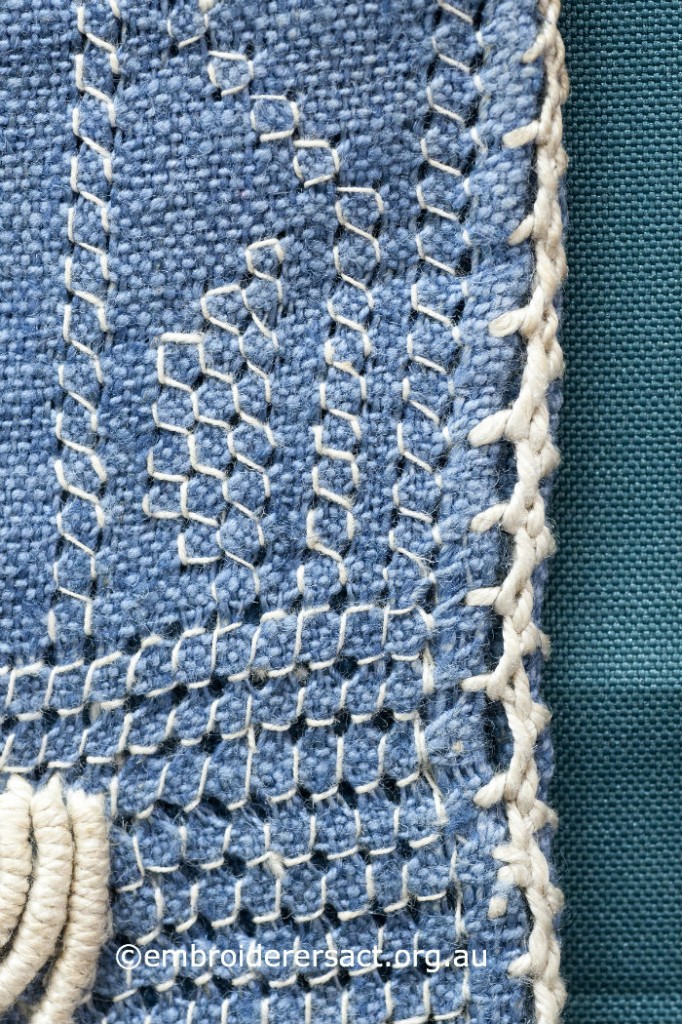
and the top edge:
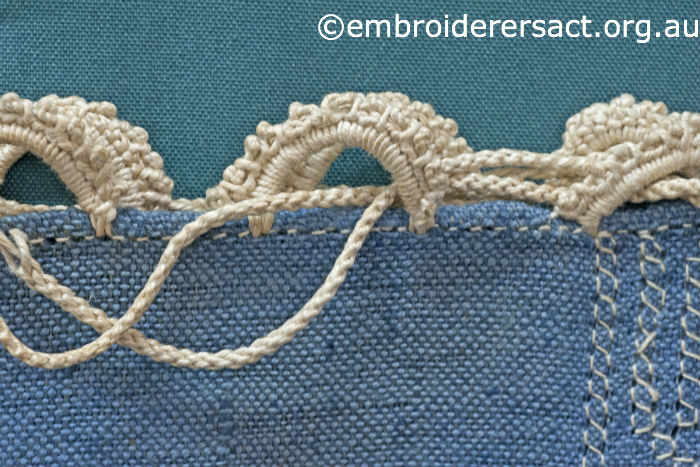
and finally the nappine or tassels that are also characteristic of the Casalguidi technique:
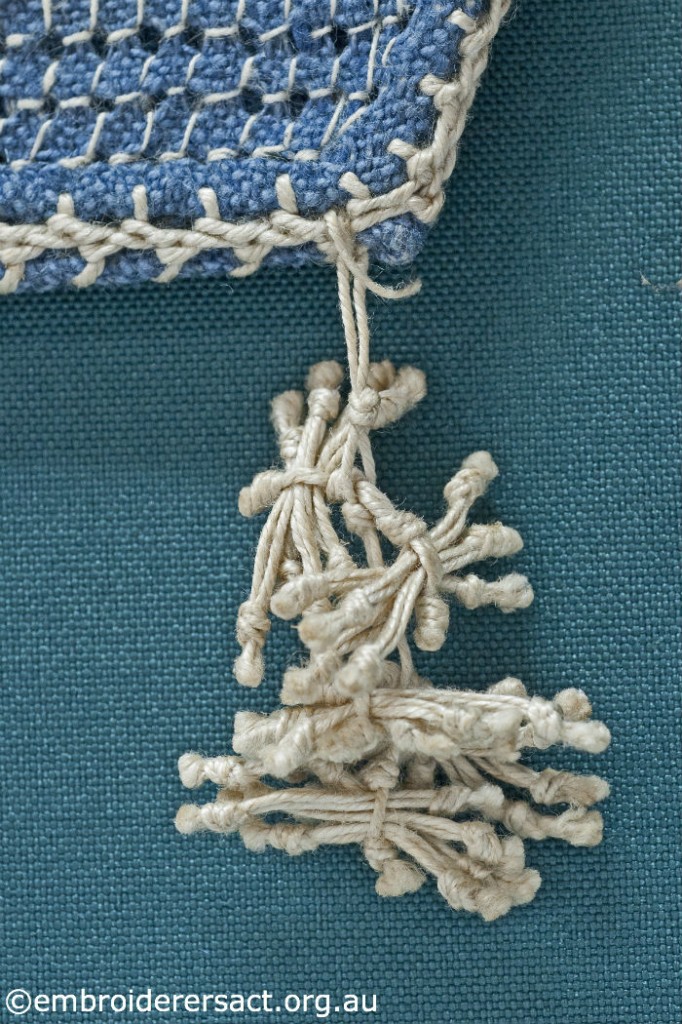
Italia Invita
Now to Italia Invita and a different take on Casalguidi work.
The cultural association il Club del Ricamo di Casale had a stall at Italia Invita:
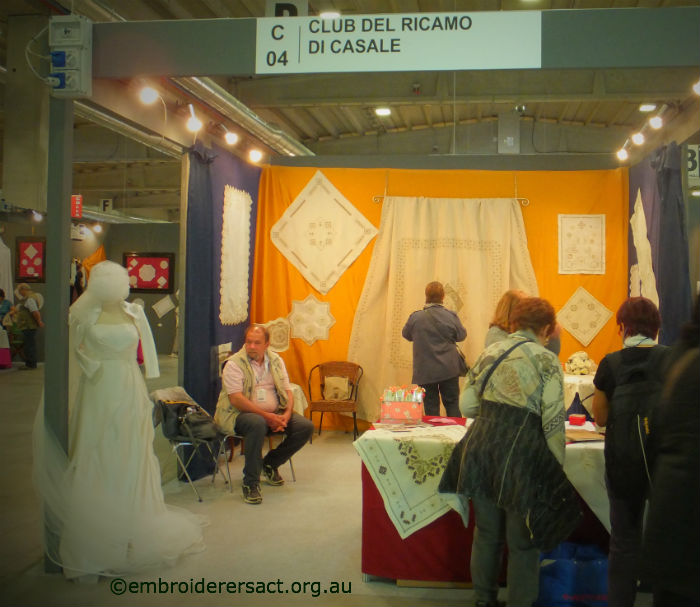
This group was founded in 1998 and is based in Casalguidi. Its mission is to preserve and promote the embroidery techniques of the Pistoia region especially Casalguidi work. It’s very active in teaching a range of local needlework techniques and attending major fiere or exhibitions to showcase these techniques.
The Club is also one of the hosts of the fiera in Casalguidi which is usually held in September and includes displays of heritage and contemporary pieces of the local embroidery styles.
Punto Antico or Punto Toscano
Before going to Italia Invita I knew that the Casalguidi technique was also referred to as punto antico/antique stitch or punto toscano/tuscan stitch. This had always puzzled me as the dimensional version of Casalguidi doesn’t have much in common with the traditional punto antico technique.
Then I saw this piece on display by the Club del Ricamo di Casale:
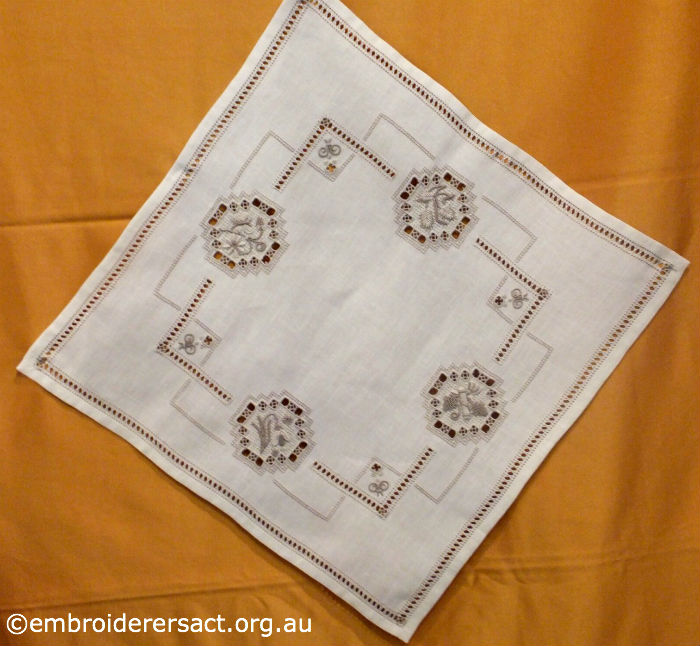
and this exquisite sampler…
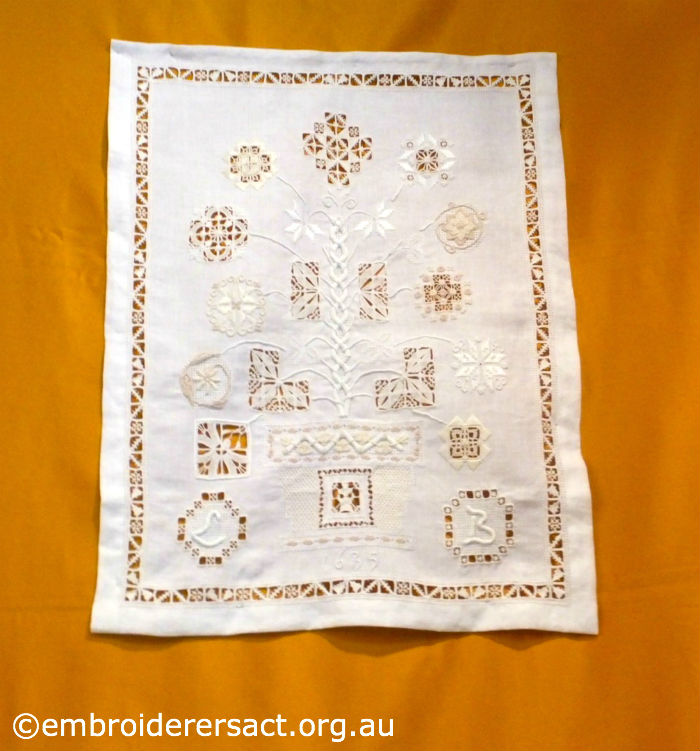
You can see the traditional elements of dimensional Casalguidi stitched in much finer threads to create a delicate blend with punto antico stitches and needlelace. Just awesome!
Carmen.




